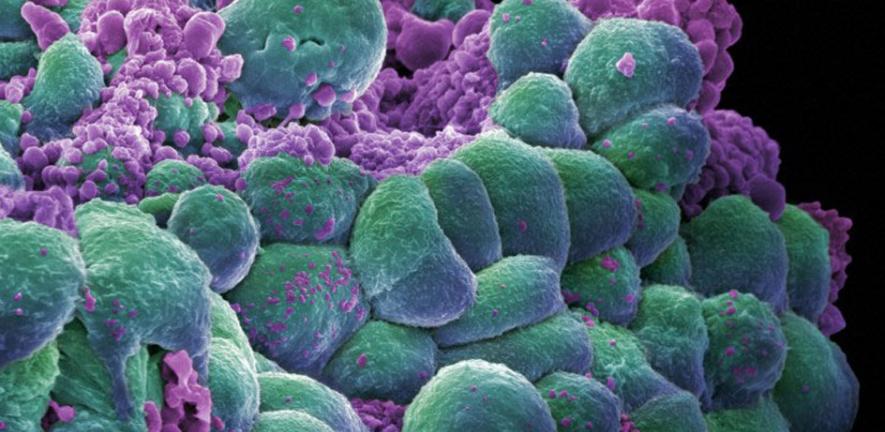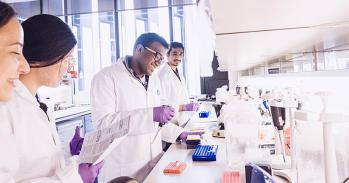
Researchers have discovered how receptors for the female sex hormone oestrogen attach to a different part of the DNA in breast cancer patients who are more likely to relapse.
Researchers have discovered how receptors for the female sex hormone oestrogen attach to a different part of the DNA in breast cancer patients who are more likely to relapse.
Understanding the genetic differences that determine who will or won’t respond to a given treatment is a vital step in being able to choose the right drugs for individual patients.
Carlos Caldas, Professor of Cancer Medicine at the Department of Oncology at the University of Cambridge and the Cancer Research UK Cambridge Research Institute
Scientists based at the Cancer Research UK Cambridge Research Institute have discovered how receptors for the female sex hormone oestrogen attach to a different part of the DNA in breast cancer patients who are more likely to relapse, according to a study published in Nature.
Crucially, they also found that within these more aggressive breast cancers, the oestrogen receptor (ER) was being ‘redirected’ to a different part of the genome by a protein called FOXA1. So drugs that specifically block FOXA1 could help treat patients who do not respond to conventional hormone treatments, such as tamoxifen.
The researchers used state of the art technology, called ChIP sequencing, to analyse ER-genome interactions in frozen breast tumour samples and create a map of all of the sites in the human genome where ER attaches itself to the DNA and switches on particular genes.
This map was used to compare where in the genome ER attached in tumours from people that responded well to treatment, versus those that went on to relapse or were resistant to treatment from the start.
This revealed almost 500 contact points that were common across all the samples analysed, but also a distinct set of contact points specific to patients with different clinical outcomes – of which 599 were associated with good response to treatment and 1,192 with poor response.
Studying patterns of gene activity in these two areas of the genome allowed the researchers to identify a subset of genes that are more active in tumours that return and spread.
Carlos Caldas, Professor of Cancer Medicine at the Department of Oncology at the University of Cambridge and the Cancer Research UK Cambridge Research Institute said: “Some breast cancers are treated with hormone treatments, such as tamoxifen, which work by blocking oestrogen receptors. But we know that about a third of patients either fail to respond to this type of treatment, or go on to relapse at a later date.
“Understanding the genetic differences that determine who will or won’t respond to a given treatment is a vital step in being able to choose the right drugs for individual patients. The next step will be to see if these findings can be repeated in larger groups of patients.”
Cancer Research UK’s Dr Jason Carroll, who jointly led the study with Professor Caldas, said: “These findings suggest that ER binds to different regions of the genome DNA in breast cancer patients that respond to treatment, compared to those that relapse and whose cancer spreads.
“We know from previous studies involving breast cancer cells growing in the lab that a protein called FOXA1 is needed for oestrogen receptors to interact with the DNA and switch on genes that fuel cancer growth. But this is the first time we’ve examined frozen tumour samples and shown that FOXA1 redirects ER to different locations within the DNA in patients with different outcomes. This switches on different sets of genes, which in turn affect the outcome of the patient. We now hope to develop ways of blocking FOXA1 to help treat patients who no longer respond to standard treatments.”
Tumour samples were obtained with support from the NIHR Cambridge Biomedical Research Centre and Cancer Research UK’s Cambridge Experimental Cancer Medicine Centre.
The Cancer Research UK Cambridge Institute is a major research centre which aims to take the scientific strengths of Cambridge to practical application for the benefit of cancer patients. The Institute is a unique partnership between the University of Cambridge and Cancer Research UK. It is housed in the Li Ka Shing Centre, a state-of-the-art research facility located on the Cambridge Biomedical Campus which was generously funded by Hutchison Whampoa Ltd, Cambridge University, Cancer Research UK, The Atlantic Philanthropies and a range of other donors. For more information visit www.cruk.cam.ac.uk.
This work is licensed under a Creative Commons Licence. If you use this content on your site please link back to this page.





